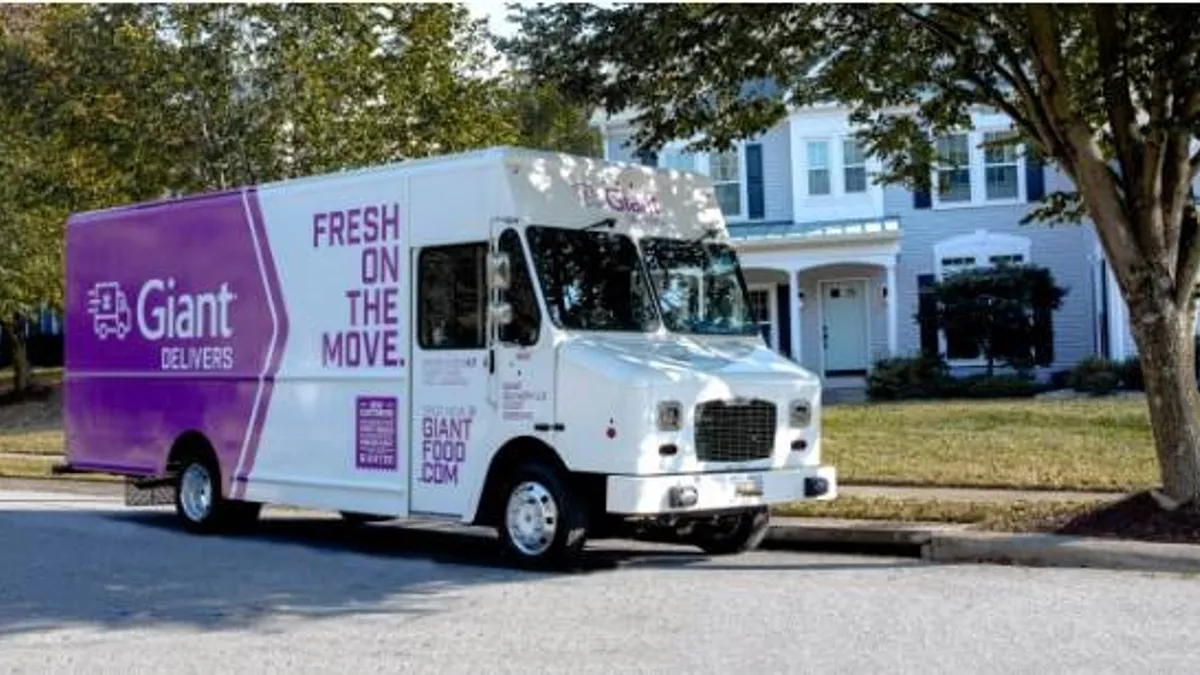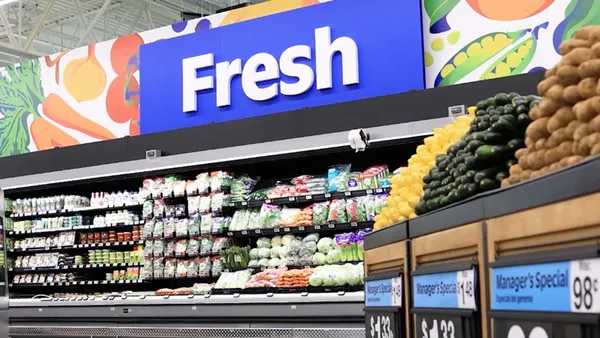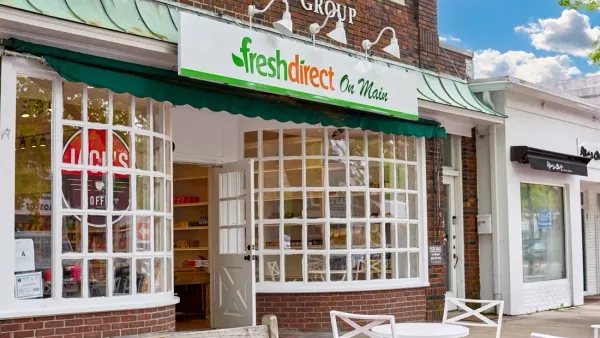Dive Brief:
- The online grocery segment is on track to account for almost half of the grocery industry’s sales growth in the United States during the next five years, according to a report published Tuesday by Brick Meets Click.
- Grocery e-commerce will represent 17% of U.S. grocery sales by the end of 2029, up from 13.5% this year, the research firm predicted.
- Grocery spending could face headwinds going forward amid uncertainty surrounding tariffs, restrictions on immigration and the future of the Supplemental Nutrition Assistance Program (SNAP).
Dive Insight:
Robust online sales are in a position to help counter projected slower growth in overall grocery spending during the second half of the decade, with e-commerce likely to grow over five times more quickly than in-store sales between now and the end of 2029, Brick Meets Click said in its report.
Grocery e-commerce, which encompasses the delivery, pickup and ship-to-home fulfillment methods, is on track to expand over the next five years at a compound annual growth rate of just under 9%, compared with only about 1.7% for in-store sales. Online sales are expected to account for more than 50% of the grocery industry’s total dollar growth in 2029, up from about 40% this year.
Delivery, in particular, is poised to continue playing a leading role in driving grocery e-commerce ahead as 2025 unfolds, building on a pattern that gained momentum last year as retailers used promotions to draw shoppers to the channel.
Digital grocery sales rose about 9% year over year in 2024 and are likely to grow by a similar amount this year, with delivery accounting for most of the expansion, Brick Meets Click predicted.
Brick Meets Click pointed to legislation now under consideration in the Senate that would sharply reduce federal spending on SNAP as a factor that could substantially impact grocery sales growth online and in-store. Households that participate in the program generally spend more per person on groceries than their non-SNAP counterparts, data from Circana shows, underscoring the importance of SNAP to the grocery industry.
About 42 million people, representing over 12% of the U.S. population, received SNAP benefits during fiscal year 2024, according to USAFacts.
Uncertainty over tariffs and the federal government’s efforts to restrict immigration could also diminish sales growth for grocers, Brick Meets Click said.
“Grocery retail has always been a dynamic business, but the rate of change over the last five plus years has disrupted shopping patterns, especially for Delivery and value formats, like Walmart, and that disruption is not disappearing anytime soon,” Brick Meets Click Partner David Bishop said in a statement.















